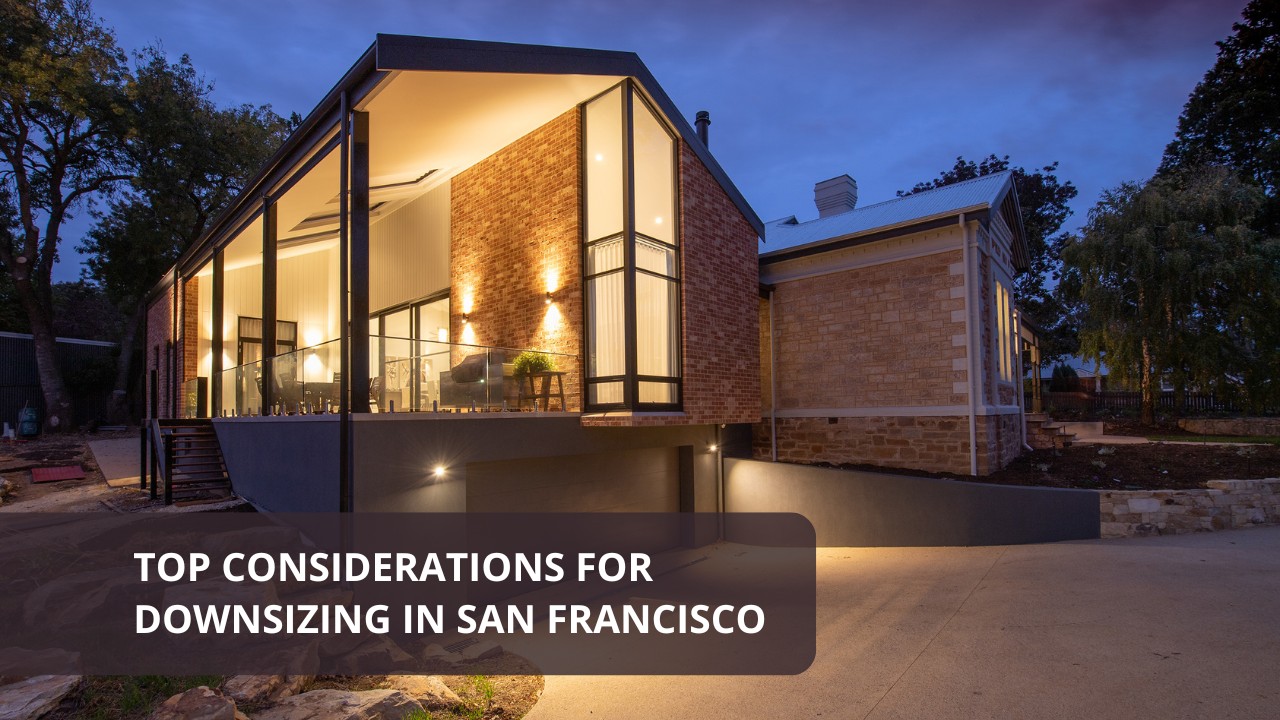Downsizing in San Francisco can be an excellent decision, especially with the city’s high living costs. Whether you aim to reduce housing expenses or embrace a more minimalist lifestyle in the urban landscape, it’s crucial to approach the process thoughtfully.
Step 1: Grasp the Market
San Francisco’s real estate market is unique, with prices often exceeding the national average. If you’re thinking about selling a property for a profit and downsizing, the expenses will vary depending on your chosen location within the city.
Key Highlights:
- Neighborhood Variability: Different neighborhoods have varying costs. For instance, Pacific Heights and Nob Hill are on the pricier side, while Bayview, Hunter’s Point and Excelsior offer more budget-friendly options.
- Market Observations: Keep an eye on market trends to determine the best time to sell and buy. San Francisco’s market is known for its fluctuations, so timing is crucial to maximizing your outcomes.
Step 2: Assess Your Space Needs
When downsizing, it’s essential to evaluate your actual space needs. Downsizing often means letting go of some belongings or finding creative ways to optimize the space you have.
Questions to Consider:
- How much room do you need? Consider how many bedrooms, bathrooms, and living spaces align with your lifestyle.
- What matters most to you? Do you need a home office, or are you comfortable with a smaller, cozier setup?
Downsizing in San Francisco can reflect lifestyle changes, such as becoming an empty nester, retiring, or embracing a minimalist lifestyle. The city offers various housing options, from cozy condos to townhomes.
Key Factors to Keep in Mind:
- Accessibility: Ensure your new home is easy to access and meets your needs, especially if you plan to age in place.
- Amenities: Look for areas and buildings that offer amenities like parks, gyms, and community spaces to enhance your living experience.
Step 3: Establish Your Budget and Consider Financing
Downsizing can help reduce housing expenses, but it’s important to establish a defined budget for both purchasing a new home and selling your current one.
Money Matters:
- Selling Costs: Understand the expenses associated with selling your home, such as agent fees, repairs, and closing costs.
- Buying Costs: Consider the costs of purchasing a new home, including property taxes, insurance, and potential renovation costs.
- Mortgage vs. Savings: Decide whether you will apply for a mortgage or save up for your new home. Evaluate your financial situation to determine a budget.
Step 4: Consider Investment Potential
Even though you’re downsizing, it’s wise to consider how the property, you’re buying, will appreciate over time. San Francisco’s real estate market is constantly evolving, and selecting a home with strong investment potential is key.
Investment Tips:
- Emerging Neighborhoods: Look for areas where growth is happening, but prices haven’t peaked yet. These locations could offer better long-term appreciation.
- Property Type: Condos and TIC units might be more affordable now, but consider their long-term value compared to single-family homes.
Step 5: Declutter and Prioritize
Downsizing isn’t just about your living space—it’s also about reducing the number of belongings you have. This process can be emotional, but it’s essential for making a smooth transition.
Decluttering Tips:
- Start Early: Begin sorting through your items ahead of time to decide what to sell, donate, or discard.
- Go Digital: Convert physical documents into digital formats to reduce clutter.
- Prioritize Keepsakes: While it’s important to declutter, make space for sentimental items and let go of unnecessary ones.
Step 6: Work with a Local Real Estate Agent
A local real estate agent who understands San Francisco’s market can guide you through the complexities of downsizing. They can help you determine pricing, negotiate deals, and find properties that align with your needs.
Advantages of Hiring an Agent:
- Market Knowledge: A real estate agent familiar with local trends can help you find a home that fits your financial and lifestyle needs.
- Negotiation Skills: With an experienced agent, you can secure better terms when buying or selling a property.
Step 7: Prepare for Moving and Transitioning
The physical process of moving can be challenging, especially after living in a home for many years. Proper preparation can make the transition smoother.
Moving Tips:
- Hire Professional Movers: Downsizing can be a complex process, and hiring professional movers can help streamline the transition.
- Pack Smart: Downsize your furniture and belongings to better fit your new space. Opt for functional, space-saving items.
Step 8: Embrace the Lifestyle Change
Downsizing isn’t just about the space—it’s also about adjusting to a new way of living. San Francisco offers a mix of urban living with easy access to transportation and cultural attractions.
Post-Move Considerations:
- Enjoy the Simplicity: Embrace the freedom and simplicity of your new, more compact living space.
- Engage with the Community: Whether you’re downsizing for retirement or a lifestyle change, get involved in the community by attending events and joining local groups.
Conclusion
Downsizing in San Francisco can be a beneficial choice if you carefully consider the factors discussed. By understanding the real estate market, evaluating your needs, and planning your finances, you can successfully navigate the downsizing process and find a home that aligns with both your lifestyle and financial goals.

 Facebook
Facebook
 X
X
 Pinterest
Pinterest
 Copy Link
Copy Link
